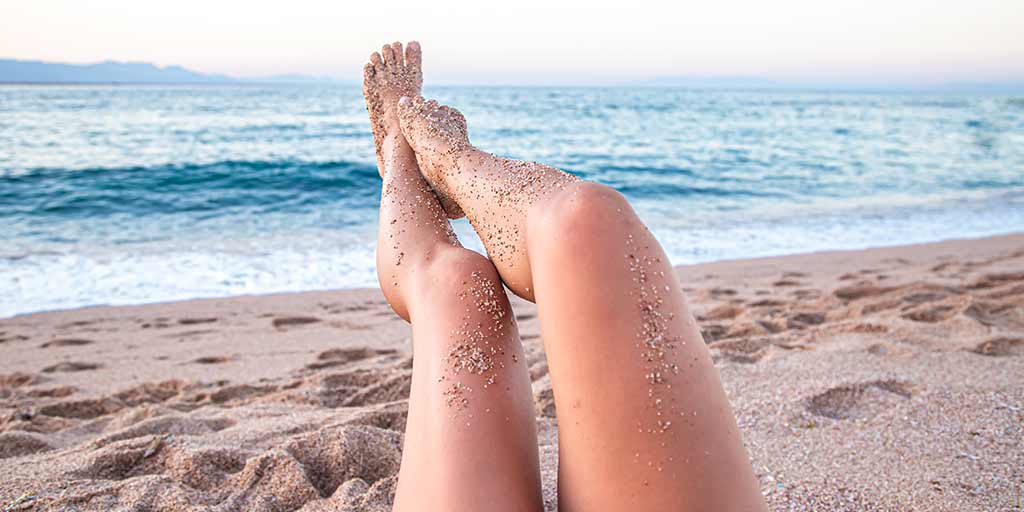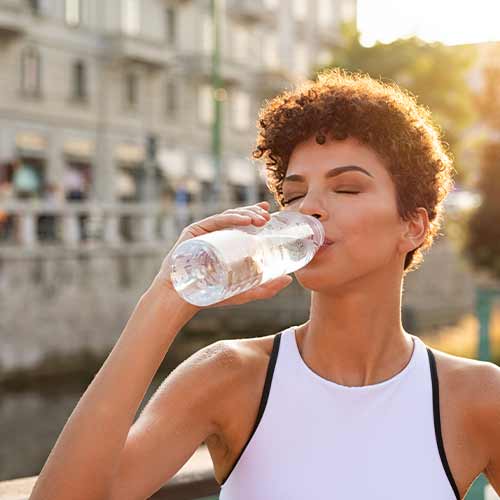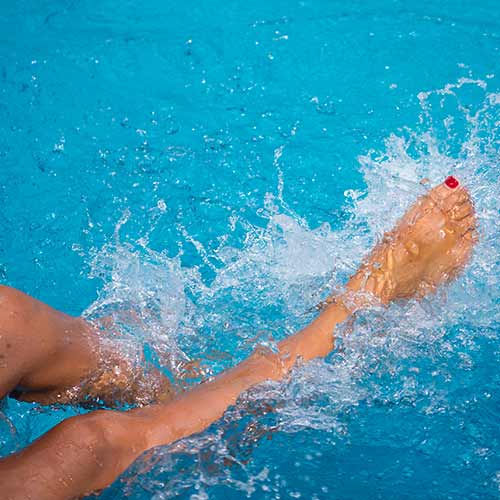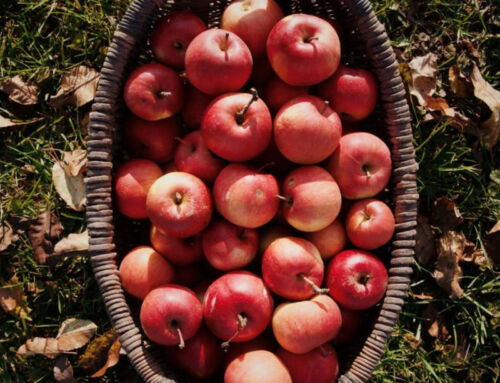As sunny days and warm months approach, the female ailments of summer return at a gallop. Women are indeed more sensitive than men to two phenomena linked to heat and the sun: the feeling of heavy legs and urinary discomfort. However, this is not inevitable! Let’s take stock of the natural alternatives to overcome them.
When summer rhymes with heavy legs
The feeling of heavy legs is directly related to blood circulation. If it gets worse during the summer, it’s because the heat, along with exposure to the sun, dilates veins, making it difficult for blood to flow.
The veins of the legs are responsible for returning blood to the heart. The leg muscles, and in particular the calves, exert pressure, which should promote this circulation. Valves—which are a fold in the lining of the veins—help blood flow and prevent it from flowing back.

How to naturally relieve this phenomenon of heavy legs
First of all, as is often the case, you need to do a few simple things to facilitate the return of smooth blood circulation.

1 Hydratation
Basic but essential: water helps thin the blood, and cleanses the body by draining toxins and eliminating them in the sweat and urine.

2 Limiter l’exposition solaire
Exposure to the sun worsens the phenomenon of heavy legs. In case of prolonged exposure, keep moving to facilitate venous return.

3 Une alimentation riche en antioxydants
Tonic veins are essential to exert better pressure on the blood to return it to the heart. To do so, it is essential that you consume a maximum of antioxidants that protect and strengthen the venous walls. They are present in citrus fruits, tomatoes, strawberries, peppers, vegetable oils (olives, nuts, grape seeds). At the same time, protein consumption should also be favoured.

4 Des vêtements et des chaussures confortables
Clothing that compresses the legs, and especially the calves, should be avoided. The choice of shoes is also strategic. You should avoid shoes that compress the feet, and high heels that interfere with the natural plantar pump mechanism.

5 L’activité physique
Move as much as possible to avoid sitting for too long. Walking, cycling, rowing, swimming and water aerobics are all great ways to stimulate blood circulation in the legs.

6 L’eau froide et les massages
Cold water massage remains an effective way to obtain immediate and lasting relief from the feeling of heavy legs.

7 Les plantes
In addition to the advice mentioned above, phytotherapy can truly help. Red Vine, Hamamelis, Sweet Clover and Horse Chestnut contribute to good blood circulation and reduce the feeling of heavy legs. You should choose aqueous formulas that promote hydration and the drainage mechanism for maximum effectiveness.
Urinary tract discomfort and infections
Summer also marks an upsurge in urinary discomfort for women. Surveys show that one in two women will suffer from a urinary tract infection in her lifetime*.
Lack of hydration
The discomfort and urinary tract infections are more frequent in summer. The main cause is dehydration. They can also be associated with constipation or diarrhoea.
In summer, when it is hotter, the body eliminates more water, especially from sweating. The season is also conducive to outings in which physical activity is higher than that of the rest of the year. However, during physical activity, the body expels more water through the lungs when exhaling
Therefore, you need to drink more during the hot season than during the cold season. When you are not hydrated enough, urine is more concentrated and therefore more irritating to the urinary tract, which can cause discomfort or even infections.
Environmental changes
Summer is also often the time when you go on holiday, and this is a radical change for your body. Your body, which is used to a daily routine, can be turned upside down by when you abruptly change your habits. This sudden change is seldom favourable to the body.
Urinary discomfort and summer
Urinary discomfort is caused by inflammation commonly caused by dehydration and bacteria in the digestive tract—usually Escherichia coli –moving towards the bladder.
How to treat these urinary disorders?
Hydration is one of the keys to preventing and relieving urinary discomfort. It is also important to urinate often in order to flush out bacteria faster.
If water is your source of hydration, it can be combined with cranberry juice. A plant rich in flavonoids, anthocyanins and proanthocyanidins, which helps reduce the attachment of certain E. coli bacteria to the walls of the urinary tract.
Lemon, an antiseptic plant, should also be taken in case of urinary disorders.
Aromatherapy: a real boost
Aromatherapy can be a natural and effective alternative from the onset of the first symptoms. To name just one, Dill Essential Oil contributes to the normal functioning of the urinary tract and promotes the renal elimination of water. For optimal results, quality essential oils are best: 100% pure and natural and chemotyped, preferably micro-emulsified in a virgin olive oil base following cold pressing.
Microbiota: a central player in women’s health
Vaginal microbiota play a major role in limiting the proliferation of pathogenic bacteria in the urinary tract. Indeed, many studies have shown the positive action of probiotics in preventing urinary discomfort. Therefore, you need to rebalance the intestinal flora for in-depth action and to avoid recurrence.

*Recurrent urinary tract infections. CHU Henri Mondor, Urology Department




